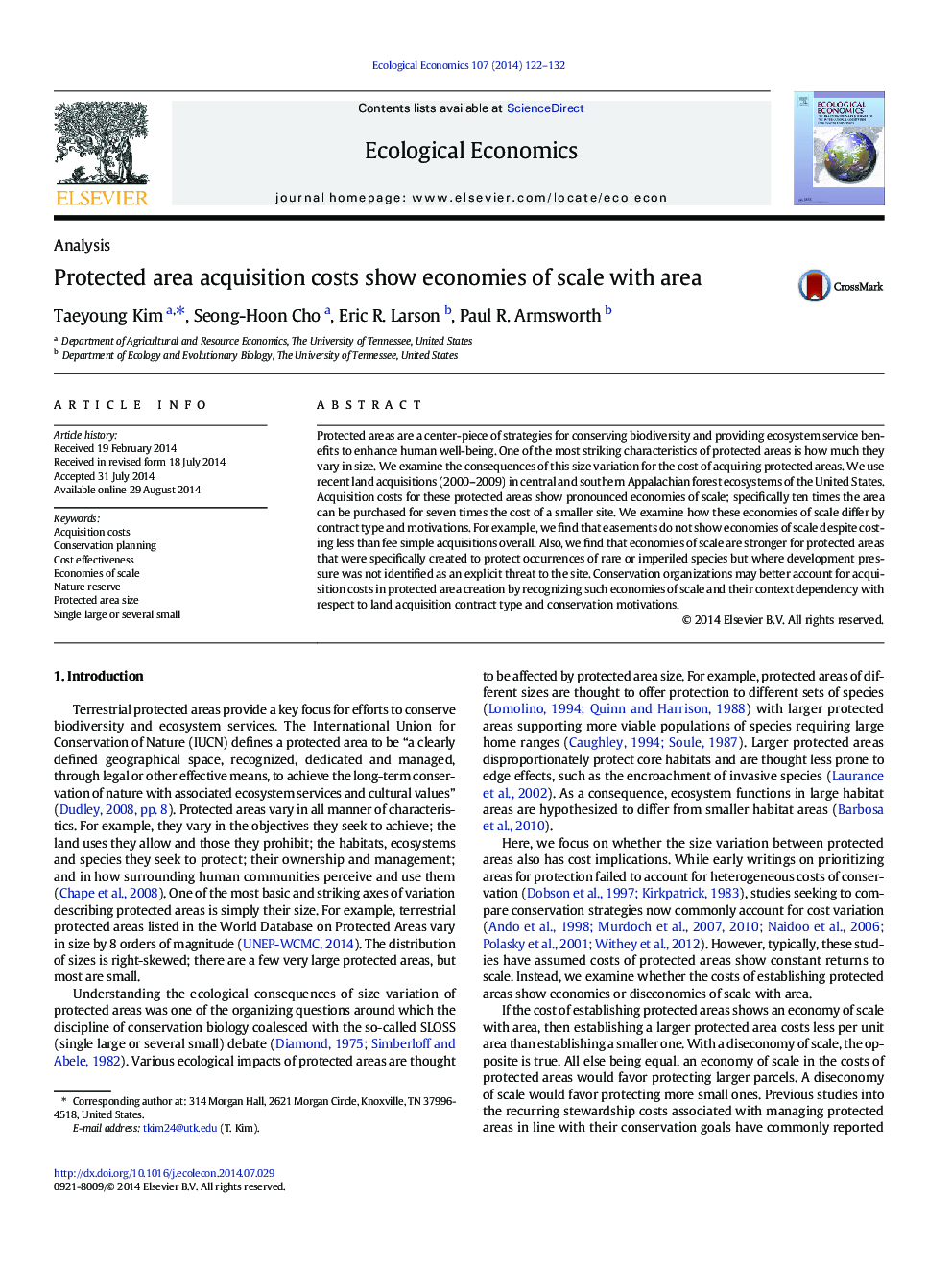| Article ID | Journal | Published Year | Pages | File Type |
|---|---|---|---|---|
| 5049511 | Ecological Economics | 2014 | 11 Pages |
•We examined the impact of protected area size on their acquisition costs.•Acquisition costs for protected areas show pronounced economies of scale in size.•Ten times the area can be protected for only seven times the acquisition cost.•Economies of scale with protected area size differ by contract type and motivations.
Protected areas are a center-piece of strategies for conserving biodiversity and providing ecosystem service benefits to enhance human well-being. One of the most striking characteristics of protected areas is how much they vary in size. We examine the consequences of this size variation for the cost of acquiring protected areas. We use recent land acquisitions (2000–2009) in central and southern Appalachian forest ecosystems of the United States. Acquisition costs for these protected areas show pronounced economies of scale; specifically ten times the area can be purchased for seven times the cost of a smaller site. We examine how these economies of scale differ by contract type and motivations. For example, we find that easements do not show economies of scale despite costing less than fee simple acquisitions overall. Also, we find that economies of scale are stronger for protected areas that were specifically created to protect occurrences of rare or imperiled species but where development pressure was not identified as an explicit threat to the site. Conservation organizations may better account for acquisition costs in protected area creation by recognizing such economies of scale and their context dependency with respect to land acquisition contract type and conservation motivations.
